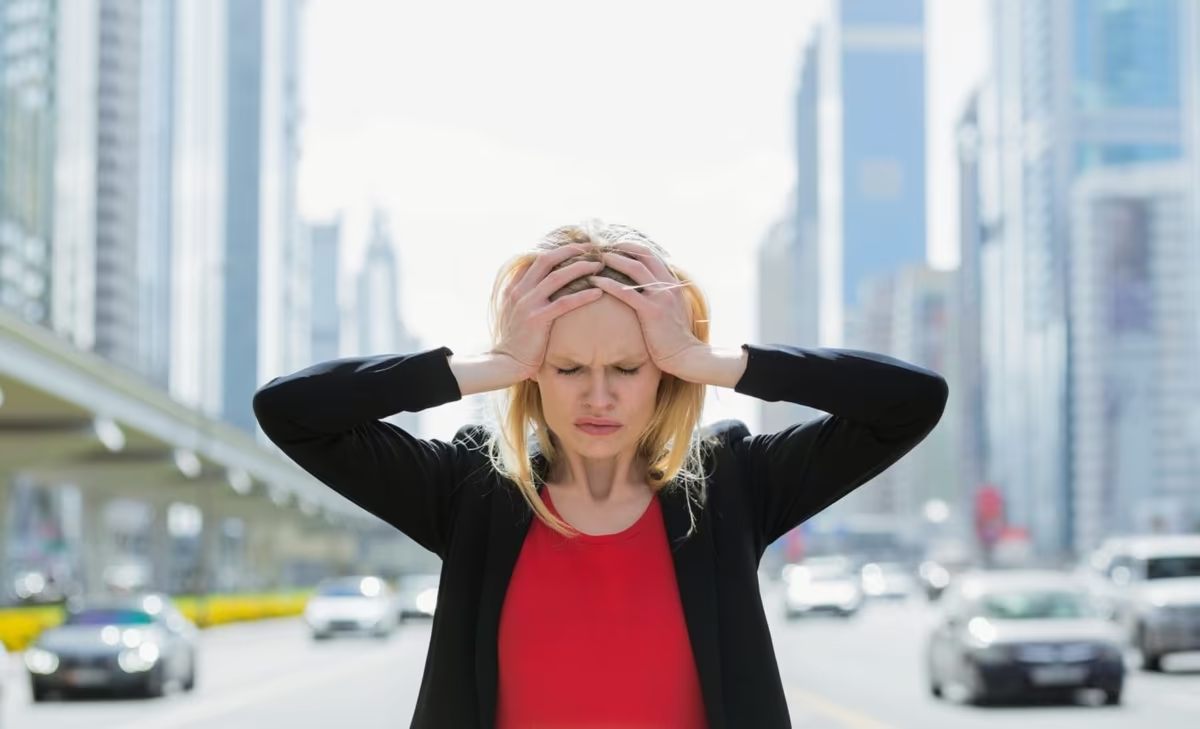The constant hum of city life often fades into the background, unnoticed by those who live in it. Yet, behind the sound of passing cars, rumbling trains, and the distant whir of traffic lights, an invisible health risk is growing louder: noise pollution.
Scientists are now uncovering how this steady environmental noise does more than disturb sleep – it can shape mental health and emotional well-being over time.
Traffic Noise and Mental Health
A recent LongITools study, published in Environmental Research, shows a clear link between traffic noise and diagnosed depression or anxiety. It is the first large-scale study to investigate long-term exposure in children, adolescents, and young adults.
Researchers from the University of Oulu found a sharp rise in mental health risks when traffic noise exceeds 53 decibels (dB) at home – a level that crosses the safe threshold set by the World Health Organization (WHO).
This research supports urban planning measures such as designing bedrooms on quieter sides of buildings, adding noise barriers, and reducing traffic speed limits to lower exposure.
Why Noise Pollution Is a Health Threat
Environmental noise from roads, railways, airports, and construction is Europe’s second-largest environmental health concern after air pollution. It can:
- Damage hearing
- Disrupt healthy sleep cycles
- Trigger stress and emotional strain
- Increase the risk of cardiovascular diseases and neurological disorders
Noise activates the body’s stress response system, specifically the hypothalamic-pituitary-adrenal (HPA) axis, which controls how we react to stress. Overstimulation of this system can impair emotional regulation, cognition, and behavior – especially in children, whose brains and nervous systems are still developing.
How the Study Was Conducted
The study followed 114,353 people born in Finland between 1987 and 1998 who lived in the Helsinki metropolitan area in 2007. Participants were tracked for up to ten years, from ages 8 to 21.
Noise exposure was calculated for both the most and least exposed sides of homes, factoring in annual averages of road and railway noise, with extra weight given to evening and nighttime exposure.
Medical records were analyzed to determine whether participants were diagnosed with depression or anxiety.
Clear Patterns Emerged
The WHO recommends keeping traffic noise below 53 dB over 24 hours. The study found that:
- Every 10 dB increase in noise raised depression risk by 5% and anxiety risk by 4%.
- Anxiety risk was lowest when noise was 45–50 dB, but increased significantly above 53 dB.
- Males and young people whose parents had no mental health disorders were more vulnerable.
- Nighttime noise had the strongest link to depression, suggesting that sleep disruption may be a key mechanism.
Independent Effect of Noise on Mental Health
The researchers also examined whether air pollution or lack of green space explained the findings. Even after accounting for these factors, noise independently affected mental health.
For anxiety, the biggest risks were seen in areas with 60–65 dB noise levels, which often coincided with poorer social and environmental conditions.
Broader Mental Health Implications
“Our findings support further actions towards reducing traffic noise exposure,” explained Yiyan He, lead author of the study.
Urban planning and public health measures could include:
- Designing bedrooms on quieter sides of buildings
- Increasing green spaces to buffer noise
- Reducing speed limits and introducing quieter tyres
- Strengthening noise regulations in high-density cities
With roughly 10% of young people in the study diagnosed with depression or anxiety by age 30, the findings highlight traffic noise as a modifiable risk factor for mental health. Since noise exposure is something cities can control, it becomes a powerful prevention strategy for protecting emotional well-being, particularly during the critical years of brain development.
Frequently Asked Questions (FAQs)
Q1. How does traffic noise affect mental health?
Traffic noise can activate the body’s stress response, disturb sleep, and impair emotional regulation, increasing the risk of depression and anxiety over time.
Q2. What is the safe noise level for mental health?
The World Health Organization recommends keeping traffic noise below 53 dB over a 24-hour period. Risks of depression and anxiety increase above this threshold.
Q3. Does noise pollution only affect adults?
No. Children and adolescents are especially vulnerable because their brains and stress systems are still developing, making them more sensitive to chronic noise exposure.
Q4. Can green spaces reduce the effects of traffic noise?
Yes. Trees and green areas can act as natural sound barriers and also provide stress-relieving benefits that support mental health.
Q5. What can individuals do to protect themselves from noise pollution?
Simple strategies include using soundproof windows, placing bedrooms on quieter sides of the house, using white noise machines, and spending time in natural environments to reduce stress.







